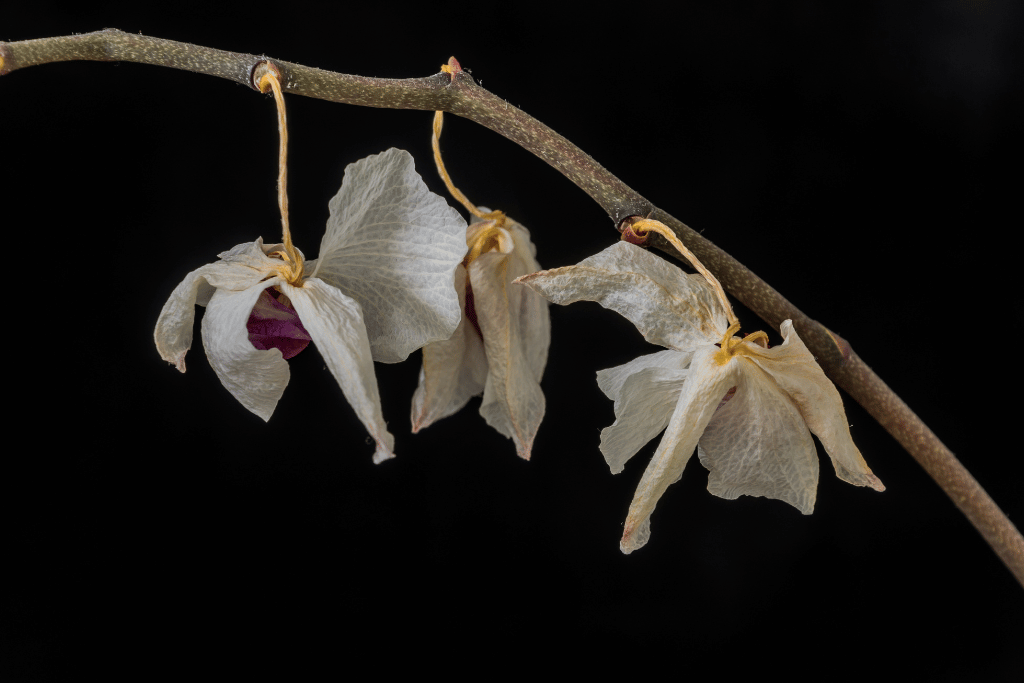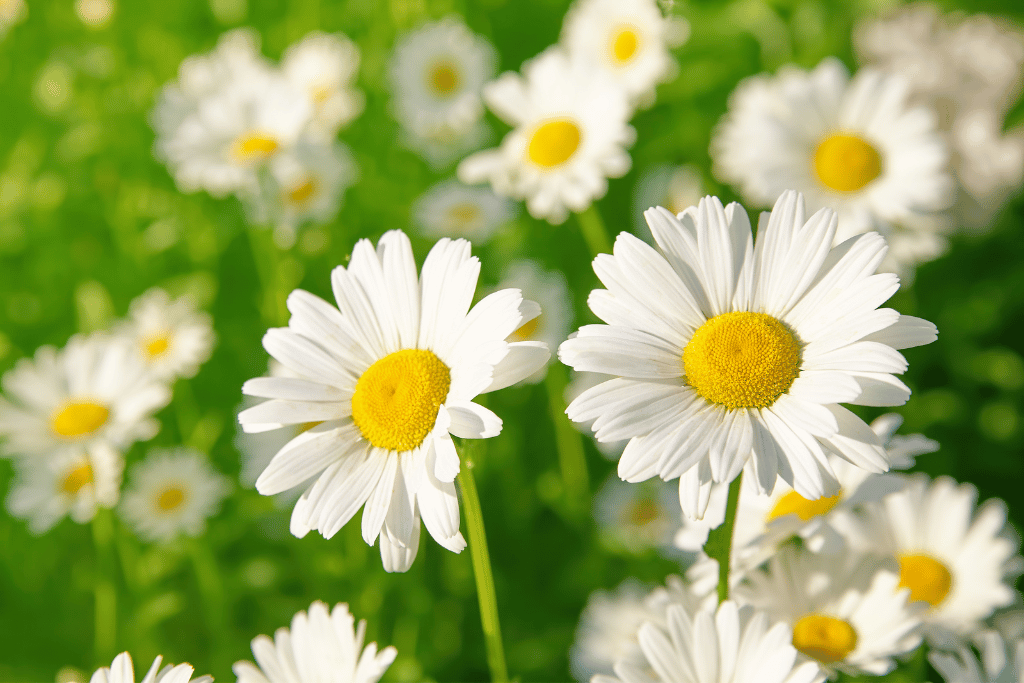Orchids have a reputation for being one of the most beautiful houseplants due to the masses of flowers they like to put out. Those lush, green leaves hang over the pots and bask in the light, helping to gain energy to allow the plant to thrive. Unfortunately, orchids also have a reputation for being pretty challenging to take care of – at least when we start out. If you’re unsure how to tell if an orchid is dead, there are usually a few signs they like to put out.
When an orchid begins to die, there are a number of symptoms it’ll exhibit. But, some of these symptoms may not necessarily indicate that it’s dying; it may simply be post-flowering stress or the orchid trying to tell you that it needs a change in the way you’re caring for it.
Symptoms of an orchid dying include yellowing leaves and stems or browning. The roots may start to feel mushy and turn brown. Early flower drop may also happen sometimes. If the orchid is already dead, the crown (which is the part of the orchid that connects the leaves and the roots) will be brown and mushy instead of green and firm. Dead orchids’ roots will usually be brown and mushy, or they may begin to turn white.

Why Is My Orchid Dying?
There are various reasons why your orchid could have died or is dying. Some of these are a lot easier to diagnose and treat than others. Commonly, underwatering and overwatering are some of the problems beginners need help with.
Underwatering
Many people think that adding a few droplets of water to the orchid every few weeks is enough to keep it going – but this isn’t true. Orchids need to be watered thoroughly when they need it, and some people will recommend adding an ice cube. Ice cubes are unsuitable for orchids, and this will expose them to drastic temperature changes, which they are not used to in nature.
In nature, orchids live in tropical forests, semi-arid regions or tundras. Therefore, they aren’t usually exposed to massive temperature drops, which would come with the seasons changing. It’s best to keep them in a position where the temperature is stable and don’t use extremely cold or hot water.
I like to stick my finger an inch deep into the soil of the orchid. If it’s still soggy, I’ll hold off on watering until it dries out slightly. Otherwise, this can promote overwatering. If the soil is dry, then I’ll thoroughly water it. It should be noted that you should never let orchids’ soil become completely dry (or any plant, for that matter); otherwise, they will suffer greatly. Underwatering can kill plants a lot faster than overwatering!
Overwatering
Similarly, overwatering is quite a prevalent problem for beginners when they buy their first orchid. Overwatering can starve the oxygen of roots, leading to them rotting and, eventually, the entire orchid dying. Roots are the heart of any plant, and their health will dictate the whole plant’s general health.
Ideally, orchids should be watered around every 7-10 days. However, the conditions you are keeping them in will cause this to vary. I’m not particularly eager to stick to a strict schedule; instead, I like to test the soil’s moisture, as I have mentioned. This helps to accurately determine when the orchid needs watering instead of giving it too much water, which can cause it to suffer.

Excessive Sunlight
Not every position in your home is suitable for orchids, so it’s essential to find that perfect position where it can thrive. While orchids do love their light, they hate being in direct sunlight. They receive filtered and indirect sunlight in their habitats due to the dense canopies they live under, so we need to try and recreate this in our homes.
I keep my orchids on a north-facing windowsill, where they are doing quite well, getting a good amount of light. You can also keep them on east-facing and west-facing windowsills, but note that east-facing windowsills can be intense for some orchids due to the sunrise. Typically, south-facing windowsills are not suitable for orchids as the light is too direct for an extended period of time. Still, some species, such as Cattleya and Dendrobium, may be able to handle this. Alternatively, you could keep the orchid a few feet away from the windowsill, and it should get enough light.
Sunburnt orchids will suffer greatly, and their leaves may start to turn a yellow-reddish color, and their stems may also begin to yellow. Moving them to a more sheltered position as soon as you notice this is important, preventing any further damage from occurring.
Insufficient Light
It’s all about finding a balance, isn’t it? Orchids don’t like to be kept in positions where they receive less than 6 hours of light, as this is unsuitable for them, and they may begin to die. As mentioned above, they should be kept in positions such as on windowsills where they can receive a good amount of light.
A tip if you are keeping your orchids on windowsills is to make sure not to let them touch the window. The cold temperature of the window can cause a significant temperature change in the orchid, which they hate. This can lead to the death of stems, so it’s always essential to ensure that the stem (or any part of the orchid, such as the leaf) does not directly touch the window.
Still Not Solved?
If this list of possible reasons your orchid may be dying has yet to solve your problem, you can read: Why is my orchid stem turning yellow? In which I explore the reasons more in-depth and provide a few more. Orchids can be tricky to get the hang of at first, it took me quite a few months and an orchid to help me understand them. If you do end up killing one, don’t get discouraged! It’s simply experience and’ll help you know what went wrong.
How To Tell If An Orchid Is Dead
Ultimately, it comes down to what the orchid looks like. If the stems and leaves have turned brown and they have begun to fall off, it’s likely that the orchid is unfortunately dead. This is the same with the roots – if they have also turned brown or black, it’s likely that they have died and therefore the orchid has gone with it.
Frequently Asked Questions (FAQ)
How do you revive a dying orchid?
Don’t fret! Dying orchids can still be revived; you need to make sure that you give them the right and proper care before they fully die. Make sure they are getting a good amount of water, but not too much – remember, you can use the finger in the soil trick. Ensure that they’re in a position where they’re receiving at least 6 hours of light, but make sure that it isn’t direct; and if it’s being kept on a windowsill, make sure the stems or leaves aren’t touching the window. If your orchid hasn’t been fed before, it might be worth giving it a heavily diluted fertiliser solution to aid it. Increase the humidity around the orchid by using humidity trays, misting or a humidifier. Orchids like to be in high-humidity environments, and in their habitats, it can range from around 70-80% humidity!
What do overwatered orchids look like?
Orchids that have been overwatered typically have leaves that will look limp or leathery, and the leaves may begin to yellow. Any new leaves that are produced by the orchid may look pleated. The roots may look yellow, brown or white and relatively flat. Ideally, orchids’ roots should be green and plump.
Do I water my orchids from the top or bottom?
I water my orchids at the soil, not any higher. It’s important that you don’t let water get into the crown of the orchid. Otherwise, this can cause crown rot which can harm the orchid. Any water that gets spilt onto the leaves is also cleaned up, as if it’s too late in the day, it won’t evaporate from the leaf and can cause the leaf to rot and cause brown spots. So for these reasons, I always like to ensure that I directly water the soil and not any other part of the orchid. Misting orchids is fine; you just need to make sure that you don’t do it too late in the day!
How do I know if my orchid is stressed?
Just like us, orchids can become quite stressed. Orchids that are stressed will typically refuse to put out any flowers, or they may terminate flower buds or drop their flowers early. These are very easy-to-spot signs. Other symptoms of being stressed may include the yellowing of leaves and stems – remember that post-flowering, this is quite normal, and it doesn’t typically mean that your orchid is dying; it just needs a break.



